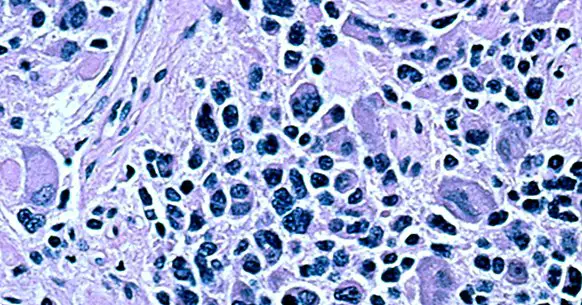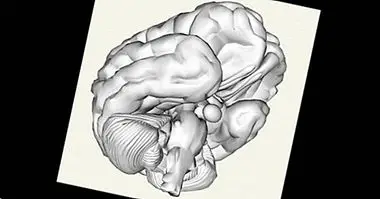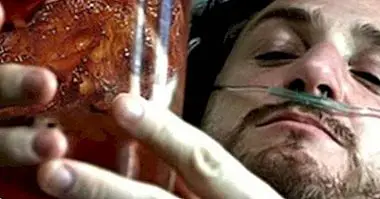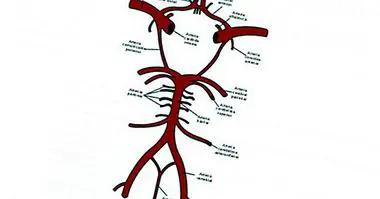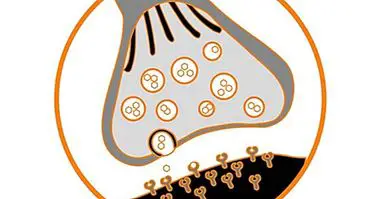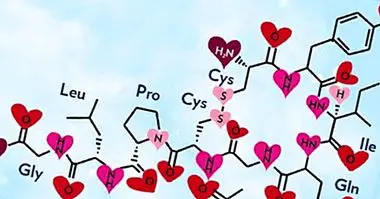Neuroblasts: the precursors of nerve cells
Nowadays the term neuron is widely known by the majority of the population. We know that it is the main type of cell that is part of our nervous system, being the basic unit of this system, and that transmit bioelectrical impulses throughout the system in order to transfer orders or information to different parts of our body .
But do we know how or from what do they arise? At what point of our development do they appear? The answer to these questions is in the neuroblasts , that we are going to know throughout this article.
- You may be interested: "Parts of the human brain (and functions)"
Neuroblasts: what are they?
The neuroblasts are a type of embryonic cell of ectodermal origin that is characterized as the precursor of nerve cells , specifically neurons and neuroglia.
It is a type of cells that appear during pregnancy, being born in the neural plate from tissue of the ectoderm to begin to mature and migrate towards its final location and finish by configuring our nervous system.
Neuroblasts are especially active and visible during pregnancy, decreasing greatly after birth although they may still be active. It is the immediate precursor of the neuron, transforming itself into it after a process of maturation.
- Related article: "Types of neurons: characteristics and functions"
The development of the nervous system
As we have said the neuroblasts are embryonic cells, which are produced during the gestation of a future individual. Before the nervous tissue can be formed It has been necessary for some development to occur in the fetus and start neurulation.
This occurs approximately at the third week after fertilization. At this moment the ectoderm is stimulated to end up generating the neuroectoderm, until it ends up generating the neural plate.
This plaque, a layer of initially epithelial cells (which will be called matrix cells), will proceed to grow and expand cephalocaudally and will generate folds, in which ectodermal cells will begin to differentiate. The plate will close on itself generating what is known as the neural tube, which will end by closing its ends during the fourth week.
The cells of the matrix are directed towards the cavity or hollow area of the tube and, at this point, proceed to divide and replicate continuously, which will cause the neural tube to increase in size. They will begin to mature and to form the first neuroblasts as such, losing the capacity to replicate (with small exceptions) and being able from now on to finish only to mature into a mature nerve cell.
From this moment, the neuroblast will proceed to migrate towards its final location, the point where it will end up transforming into a neuron. Generally, the greater the age of the neuron, the greater the depth at which it will be found.
An example can be seen in the spinal cord. Once formed, the neuroblasts begin to migrate towards the periphery of the neural tube , reaching the so-called intermediate zone that will end up being the gray matter of the marrow, where they will begin to mature and grow peripherally until generating the marginal zone (future white matter). Other cell types will also be generated by the matrix, such as glial cells and microglia.
Neuron formation
The neuroblast does not immediately transform into a neuron, but requires a process of maturation to be able to form it. Initially the cell from which the neuroblast and future nerve cell are going to form They have a nucleus and a protodendrite , being inserted into the wall of the neural plate. However, at the moment of migrating towards the cavity to begin to replicate it loses said dendrite, becoming an apolar spherical nucleus.
Once the replication process has finished and according to the neuroblast begins to form as such, two opposite prolongations progressively appear, forming something similar to a bipolar neuron. One of these prolongations is lengthened and will end up transforming into an axon, while the other is fragmented to generate future dendrites. These elements will mature over time to end up configuring an adult neuron.
- Maybe you're interested: "What are the dendrites of neurons?"
Do they exist in adults?
Although previously it was thought that only neuroblasts could be found in pregnancy and in the first years of life, with the discovery of adult neurogenesis in some regions of the brain it has been possible to observe how in some regions neuroblasts are formed throughout our lives, especially in the subventricular zone of the third ventricle and in the hippocampal gyrus.
These neuroblasts they are mainly directed to the olfactory bulb or to the hippocampus itself , to generate inhibitory neurons of the gabaergic type or glutamatergic excitators, and allow a large number of functions to be maintained.
The neurogenesis that supposes its existence is fundamental to allow the mental plasticity, the learning, and the discrimination of stimuli. At the level of pathology, it can allow the overcoming of strokes, strokes and traumatisms and the at least partial recovery of lost functions.
- Related article: "Hippocampus: functions and structure of the organ of memory"
Possible problems and associated diseases
Given that neuroblasts are the previous step to the existence of neurons, we are facing one of the most relevant types of embryonic cells for our development. However, as it happens in all types of cells we can find different problems throughout their generation and maturation.
It is possible that the neuroblasts fail to mature to form complete neurons , that there is an uncontrolled, sudden and harmful growth in their number, that they do not migrate to the areas where their existence would be necessary or that for some reason there are not enough in the organism.
The causes of these alterations can be acquired, but taking into account that much of the formation and migration of neuroblasts occurs during pregnancy it is much more likely that the cases are due to genetic disorders, problems during the pregnancy of the fetus or appearance of mutations
Two examples of disorders that are linked to neuroblasts are we can find in in the presence of an anencephaly or in the existence of malignant tumors linked to these cells known as neuroblastomas.
Bibliographic references:
- Snell, R.S. (2007). Clinical neuroanatomy. 6th edition. Editorial Panamericana Medical. Madrid Spain.
- López, N. (2012). Developmental biology. Work notebook. McGraw Hill.

